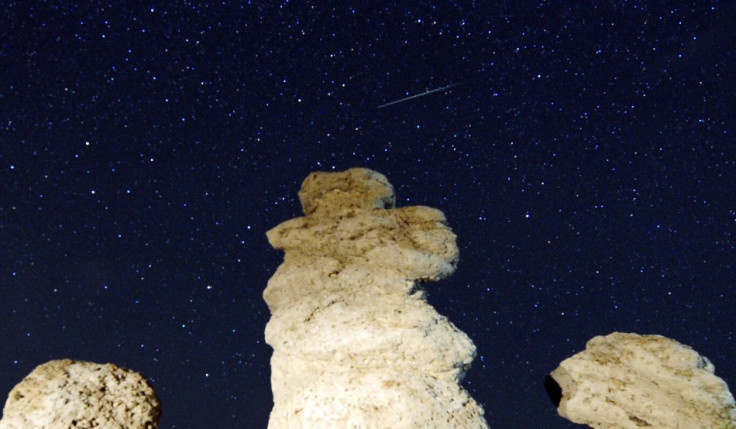Eta Aquarids Meteor Shower 2013: When, How and Where to Watch Live
The Eta Aquarids meteor shower peaks over the weekend. This is the third major meteor shower of the year, following the Quadrantids and the Lyrids. The Eta Aquarids are generally active from mid-April to late May and are created when the Earth passes through streams of dust cast off from Halley's Comet.

The peak of the Eta Aquarids meteor shower will occur on the night of 5 May and carry on into the next morning, with between 40 and 60 meteors expected to be visible, under ideal conditions, very hour.
The Eta Aquarids will be more visible in the southern hemisphere but worldwide viewing is expected to be possible. The meteor shower will fly through the planet's upper atmosphere at speeds reaching 148,000 miles per hour and will leave visible smoke trails because of the high velocity.
Observers in the northern hemisphere should probably be aware the Eta Aquarids may only be visible during the last couple of hours of night time. This is because radiant is located 60 degrees west of the sun - it rises before the sun in the morning hours.
"Each eta Aquarid meteoroid is a piece of Halley's Comet doing a kamikaze death dive into the atmosphere," NASA astronomer Bill Cooke said, "Many people have never seen this famous comet, but on the morning of May 6th they can watch bits of it leave fiery trails across the sky."
How to Watch Eta Aqaurids Meteor Shower
- Find an area away from city lights or other bright light sources and be patient. It can take up to 20 minutes for your eyes to adjust to the new environment
- Wear appropriate clothing for overnight temperatures. Keep in mind that night time temperatures can be significantly colder than those in the day time, in some parts of the world
- Have something comfortable to sit on - a good reclining chair, sleeping bag or ground pad (experts suggest you lie flat on your back and look straight up)
Meanwhile, a fireball was spotted over western skies in the Washington DC region. The American Meteor Society (AMS) confirmed the incident after three dozen independent reports placed the event at 11.45pm local time on Wednesday.
However, any belief the fireball was a prelude to the Eta Aquarid meteor shower was quickly ruled out by AMS' Mike Hankey, who wrote: "First, both of these fireballs occurred several hours before the Eta Aquarids radiant had even risen. Secondly the radiants for these fireballs were no where near the Eta Aquarids radiant."
© Copyright IBTimes 2024. All rights reserved.







